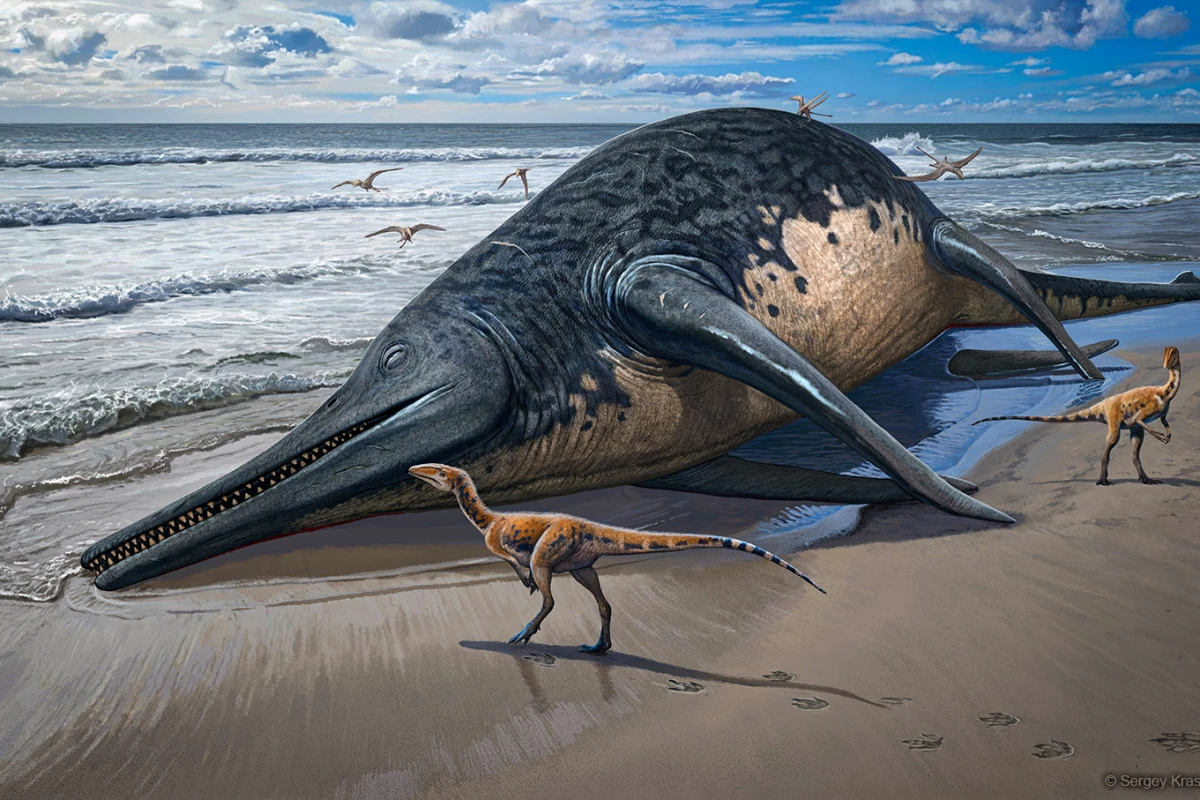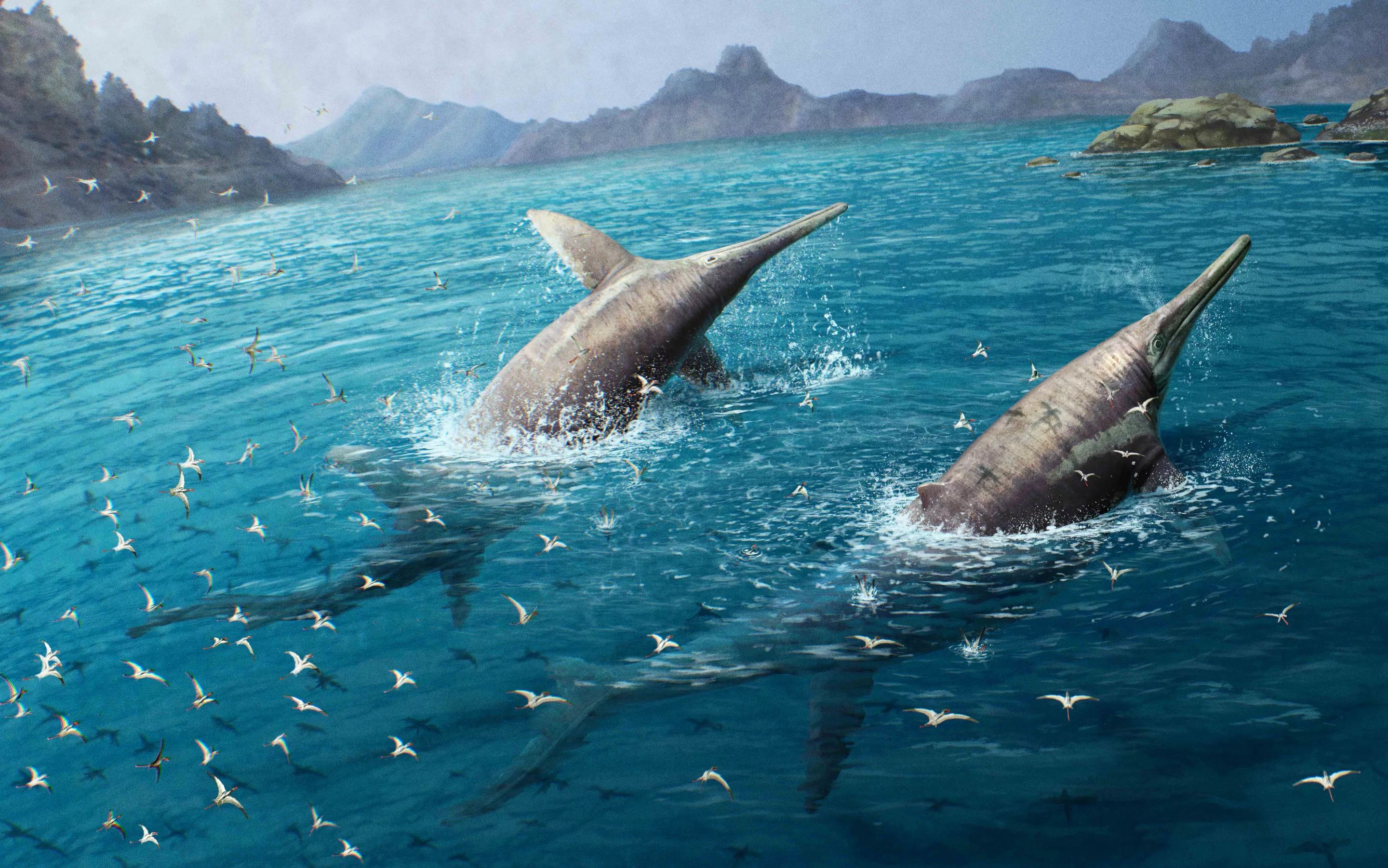A newly described species of marine reptile could be the largest to ever swim the world’s oceans. The “giant fish lizard” lived more than 200 million years ago, and may give the blue whale a run for its money, size-wise.
Ichthyosaurs are a diverse group of marine reptiles that patrolled the seas during the age of the dinosaurs. They kind of look like a cross between a fish and a dolphin, and could grow anywhere from around 2 to 20 m (6.5 to 66 ft) long. But now, that upper limit may need to stretch, as two separate discoveries suggest that a much bigger creature was roaming the ancient oceans.
The new species has been named Ichthyotitan severnensis, which means “giant fish lizard of the Severn” (a river near the site). And it sure earns that title, with researchers estimating that it may have measured up to 25 m (82 ft) long. That puts it in blue whale territory, making it comfortably the largest marine reptile ever known and up there with the largest known animals.
Of course, length isn’t the only measure of size – Patagotitan is thought to be the largest land animal, and at 37 m (121 ft) it’s much longer than Ichthyotitan. But it’s mostly neck and tail, and tips the scales at “just” 70 tons, or less than a quarter of a blue whale. Our new fish lizard friend has a bulky body shape closer to that of a whale, so it could also be a contender for heavyweight champion.

That said, the researchers haven’t yet estimated its weight, and caution that its length is also still debatable, pending the discovery of more fossils. So far, Ichthyotitan is only known from two jawbone specimens – the first was discovered in 2016 on a beach in Somerset, UK, by fossil hunter Paul de la Salle. It was scientifically described in 2018, but the scientists resisted the urge to name a new species until more data came to light.
A few years later, their wish came true when a father/daughter fossil-hunting team, Justin and Ruby Reynolds (the latter of whom was only 11 years old at the time), stumbled on a similar giant bone just a few miles away from the first. Collected in fragments between 2020 and 2022, this new jawbone measured more than 2 m long – that’s as long as the entire body length of some other ichthyosaur species. With that, the researchers were finally confident enough to declare a new species, although of course more fossil finds are needed to get a clearer picture of the creature.
“This new specimen is more complete, better preserved, and shows that we now have two of these giant bones (called a surangular) that have a unique shape and structure,” said Dr. Dean Lomax, an author of the study. “These jawbones provide tantalizing evidence that perhaps one day a complete skull or skeleton of one of these giants might be found. You never know.”
For now, the team estimated the length of the Ichthyotitan using a simple scaling factor formula, essentially comparing the length of this bone to the total body length in a range of ichthyosaur species. The researchers found that it was about 25% larger than the same bone in Shonisaurus, another giant ichthyosaur with a body length of around 21 m (69 ft). Using that ratio, as well as that of other species, the team calculated a body length of between 20 and 26 m (65.6 and 85.3 ft) for Ichthyotitan.

The colossal creature would have lived about 202 million years ago during the Late Triassic period, the culmination of about 50 million years of evolution for ichthyosaurs. But its reign didn’t last long – giant ichthyosaurs disappear from the fossil record at the beginning of the Jurassic, about 200 million years ago. Smaller species persisted until about 90 million years ago, before they lost out to competition from long-necked plesiosaurs, superpredator mosasaurs, and other marine reptiles.
We can only hope that more fossils turn up, and scientists are able to zero in on just how big these things were.
The research was published in the journal PLOS ONE.
Sources: Scimex, The Conversation






